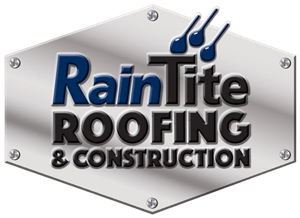Hailstorms are an unpredictable and destructive force that can cause significant damage to your home, particularly to its first line of defense — the roof. In the aftermath, homeowners often grapple with various questions, such as how to identify hail damage, the best course of action for repairs, and the most effective preventive measures to safeguard their roofs from future hailstorms. This comprehensive guide aims to provide clear, actionable information to help homeowners recognize, repair, and prevent hail damage to their roofs.
Rapid City residents are no strangers to hailstorms and the potential for roof damage. Swift action and the right resources can make all the difference in addressing and mitigating any adverse impacts on your home.
By exploring these essential subjects, homeowners will be better equipped to respond decisively to hail damage and ensure their homes remain secure against future weather events.
For expert guidance and support for hail damage repairs, replacements, and preventive measures, contact RainTite Roofing & Construction. Click here to schedule your free, no-obligation consultation, and let our experienced professionals restore the safety and comfort of your home.
Recognizing Hail Damage on Different Roofing Materials
Identifying hail damage on your roof depends on the type of roofing material you have. Here are some signs of hail damage on common roofing materials:
1. Asphalt Shingles: Look for dents, bruises, or granule loss in a random pattern, exposing the asphalt layer underneath.
2. Wood Shingles or Shakes: Check for cracks, splits, or dents on the surface or corners of the shingles.
3. Metal Roofing: Inspect for dents or gouges, particularly in the roof’s valleys, ridges, or seams.
4. Tile or Slate Roofing: Watch for cracks, chips, or shattered tiles resulting from hail impact.
Ignoring signs of hail damage can lead to a weakened roof structure, leaks, and costly future issues. Prompt assessment and repairs are crucial to maintaining your home’s integrity.
Inspecting Your Home for Hail Damage: Ensuring Safety and Thoroughness
When conducting a hail damage inspection, follow these steps to maintain safety and ensure a thorough evaluation:
1. Wait until it’s safe: Ensure the storm has passed and the conditions outside are secure before venturing outdoors.
2. Ground-level inspection: Initially, examine your home from the ground using binoculars to inspect the roof, vents, gutters, and siding for damage without climbing.
3. Check property surroundings: Look for dents in cars, damaged outdoor furniture, or shattered windows, which may indicate the presence of hail damage on your roof.
4. Internal inspection: Look for water stains, peeling paint, or mold on your home’s interior walls and ceilings that may signify hail damage and the beginnings of leaks.
5. Call a professional: Roof inspections can be dangerous and should eventually be conducted by roofing experts who can provide a safe, accurate assessment of the damage.
Working with Insurance and Finding the Right Roofing Contractor
Navigating insurance claims and choosing a reliable roofing contractor is essential to the recovery process. Here’s what you should know:
1. Review your insurance policy: Ensure you understand the coverage your policy provides for hail damage. Some policies may include time constraints on filing claims or require regular roof maintenance.
2. Document the damage: Take photographs of the damage immediately after the storm to support your insurance claim. Keep a record of dates, damage details, and communication with the insurance company.
3. Get multiple estimates: Obtain estimates from multiple licensed roofing contractors and compare them against the insurance adjuster’s settlement offer. This ensures you receive a fair settlement to cover your repair costs.
4. Choose a reputable contractor: Look for licensed, insured, and experienced roofing contractors. Check references, online reviews, and verify their expertise in hail damage repair. Avoid storm chasers or contractors seeking payment before work begins.
Repair or Replacement? Evaluating Your Options
Depending on the severity of the hail damage, you may need to decide whether to repair your roof or replace it entirely. Consider the following factors:
1. Extent of damage: Minor, localized damage may be suitable for a simple repair, while widespread or severe damage could warrant a full roof replacement.
2. Roof age: An older roof with existing wear and tear could benefit from a full replacement. Generally, asphalt shingles last 15-30 years, metal roofs 30-50 years, and tile or slate roofs 50-100 years.
3. Financial considerations: Weigh the immediate cost of roof repairs against the long-term costs of a full roof replacement to determine the most cost-effective solution.
4. Energy efficiency: A new, energy-efficient roofing system could provide long-term savings on energy bills, making a full replacement more attractive.
Consider your options carefully and consult with an experienced roofing professional to determine the best course of action for your specific situation.
Conclusion:
Hail damage can be a source of stress for homeowners, but by recognizing the signs, inspecting your home, working with insurance, hiring the right contractor, and determining whether a repair or replacement is necessary, you can minimize its impact. Furthermore, preventive measures and the installation of hail-resistant materials can help safeguard your roof against future hailstorms.
When it comes to hail damage repair in Rapid City, trust only RainTite Roofing & Construction. With our roofing and construction services, we can help rotect your home and secure your peace of mind. Click here to schedule your free, no-obligation consultation and let our experienced professionals expertly assess, repair, or replace your hail-damaged roof and implement the best preventive measures to secure your home’s integrity.

